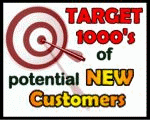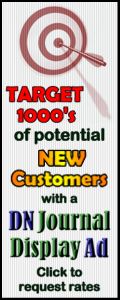| international Skype hookup with
Gilmour so he could take me through a step by step demo that
showed exactly how high ParkLogic has reset the domain
management bar. I quickly learned that if you are still
managing your domain names in an Excel spreadsheet
(or even a dedicated software program), you are essentially
driving a Model T Ford in what ParkLogic has turned
into a Ferrari world.
The good news is that even if you don't have the kind of
domain portfolio that ParkLogic accepts into their system,
odds are you will soon have access to the asset
management system they have developed. Gilmour said the
company's primary focus is making the system available as a white
label solution to other companies, rather than
limiting it to their own clientele. That means the features
I saw will likely become available at a variety of service
providers in the months ahead. Gilmour explained that
approach saying, "Rapid development and analytics are our
thing. We prefer to work through channels and want to partner
with everyone not compete with everyone. We are
looking to foster relationships on their platform."
Gilmour said that migrating ParkLogic to SalesForce.com's
CRM software (a staple among Fortune 500 companies)
was a key to what the company has accomplished because it is
ideally suited to fast, scalable, secure and robust domain
management. In turn, SalesForce was so impressed with what
ParkLogic did on their foundation that they produced a case
study on it.

Screenshot
from the upper portion of a ParkLogic account home page
Gilmour started my tour with a look at the capabilities
of the parking module which continually tests the domain
owner's traffic with multiple PPC providers to find
the one that pays best for that particular domain.
Gilmour built his reputation on optimizing domains
for maximum click through and he continues to leave no stone
unturned. A feature I particularly like allows you to see in
advance exactly what your PPC landing pages will look
like at most of the popular domain parking companies. This live
view allows you to eliminate the ones that are not
showing relevant results for your domain and select the one
that has the most effective combination of relevance and
visual appeal.
The system will also test different methods of
monetization, including direct advertising and affiliate
programs as Gilmour believes the less reliance on Google
and Yahoo the better. The platform is sophisticated
enough to send traffic to an affiliate program only
during hours that shoppers are most active - 9am-5pm
for example - then redirect to a different location. It is
easy to find out what is most effective because the detailed
stats tell you exactly where each dollar came from.
The platform also has a direct connection to many popular
parking and registration companies, including Moniker,
Enom and InternetX, that allows you to control
most major account functions at those companies from within
your ParkLogic account.
Gilmour has always been an evangelist for more
transparency in parking so it was also gratifying to see
that he is practicing what he preaches by actually breaking
out the exact commission the company takes from
the parking revenue the domain receives - something I have
never seen before.
An endless assortment of charts and graphs allows you to
get an easy to digest summary of any statistic you want to
take a closer look at. One of the best bits of data analysis
gives you domain renewal recommendations. Based on
any criteria you set, the system will return a list of
domains that are worth keeping at renewal time. For example,
you could say I only want to keep domains that earn at least
80% of the renewal fee or that get so many daily page
views.

This
chart recommends which domains you should renew and
which you should drop based
on the criteria you specify (it also shows you the months
the renewals/drops would occur in.
You can also separate domains into a brandable
portfolio that you want to keep for the sales potential of
the name value alone, regardless of revenue or visitor
stats. The system in turn, has a complete domain sales
and cost tracking module to make sure you are maximizing
profit - the metric that is more important than
revenue alone. The platform will also track capital lost
and print out a corresponding report for your accountant to
maximize tax benefits.
Another thing I liked about the sales tracking function
is that it allows you to log all sales inquiries and add
notes, attachments, etc. - anything relevant to that domain
is made part of a permanent record that can come in handy in
future negotiations.
Reporting is also one of the system's many strong
suits. You can call up a report on renewal costs for any
given month (a great help in budgeting since renewal costs
can vary widely from one month to the next) or an income
report to follow net cash flow.
Another innovation Gilmour has come up with is the Domain
Risk Index (DRI) which measures your portfolio against
the industry as a whole based on more than 20 different
metrics. The score ranges from 0 for a very high risk
portfolio (based on trademark and other issues that diminish
value, such as declining CPC or CTR numbers) to 100 for a
very low risk portfolio. Gilmour correctly reasons that a
low risk portfolio should command a higher price than
riskier portfolios and the index allows portfolio owners to
quantify that. "If your portfolio has a DRI score of 80
then you have been very careful in assembling it and should not
be selling it for two years revenue - you should be selling
it for five years revenue!" Gilmour said.
Within your account the DRI will also show where each of
your domains fall across the entire DRI scale. For example,
it might show 100 of your domains have a DRI between 0-30,
100 others might be 30-70 and the rest 70-100. That makes it
easily to identify the domains at the high end of the scale
that you should not sell cheap

The
account's Domain Risk Index shows how the portfolio
compares to the industry
as whole on a wide variety of metrics that have a bearing on
the portfolio's value.
Gilmour pointed out that if someone has $100,000 to
invest in domains they want to be able to see these kinds of
metrics so they can minimize risk and concentrate on the
highest quality domains. In addition to the overall score,
the many individual metrics that make up the DRI can be isolated
with a single click. For example you can bring up the
latest earnings per click trend or the click through rate
trend. Gilmour said that another key metric is earnings
stability. Investors don't want a domain that earns $1
on a given day and 2 cents the next day.
Gilmour expects adoption of the DRI to bring added
liquidity to the market as a result. "For the
first time ever the industry can separate domains on a
financial risk basis," Gilmour said. For those who want
to propagate it, Gilmour makes a DRI widget available for
display on any website - you can see it live in the upper
corner of his Whizzbang's Blog home
page. You can get
the widget here.
ParkLogic is already working on a more powerful DRI that
can be applied to market verticals so, for example,
there will be a separate DRI for travel portfolios, finance,
etc. Gilmour said they are also working on ways to value
stock domains, including being able to assign a valuation
for every traffic domain.
If you don't want to wait for your current provider to
incorporate ParkLogic's platform and believe your portfolio
is strong enough to qualify for a direct ParkLogic.account,
you can contact Michael for a personal demo at [email protected].
|










